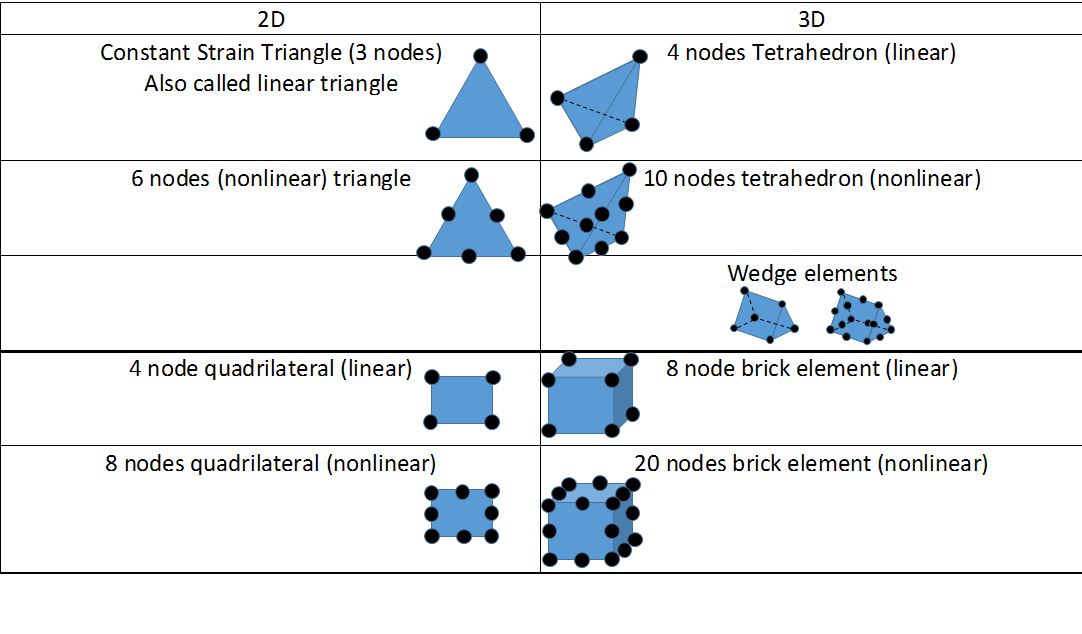Two Dimensional Solid Elements: Extension to 3D
Extension to 3D
The 2D elements discussed previously can be extended in a straightforward manner to the three dimensional case. In three dimensions, the 4-node tetrahedron is the 3D version of the linear triangular element, while the 10-node tetrahedron is the nonlinear 3D version corresponding to the quadratic triangular element. The 8-node brick element (trilinear quadrilateral) is the 3D version of the bilinear quadrilateral, while the 20-node quadratic brick element is the nonlinear 3D version corresponding to the quadratic quadrilateral. The properties of the two-dimensional elements are inherited by their three-dimensional counterparts. In addition, a wedge elements can be defined in 3D for meshing irregular regions or when combining tetrahedrons with brick elements. See the following table for illustration of possible 3D elements that exist in the variety of available FEA software.
It should be mentioned that most FEA software have built-in meshing capabilities. For 3D solids, the automatic meshing algorithms that produce brick elements might fail in meshing irregular shapes. However, the tetrahedron meshing will most always succeed in meshing an irregular shape. In such cases, if accuracy is sought, either a fine mesh or the nonlinear tetrahedron should be utilized.

